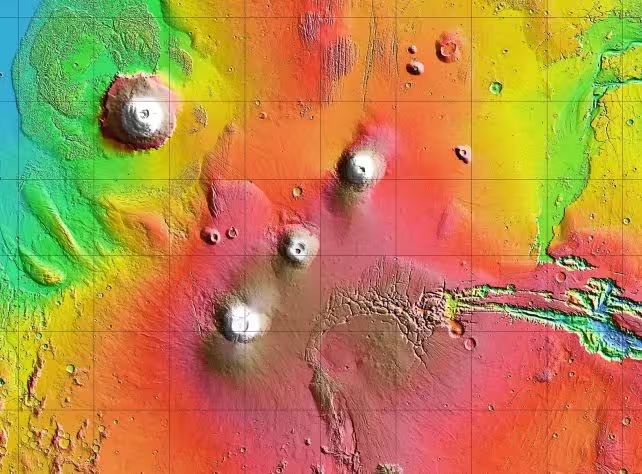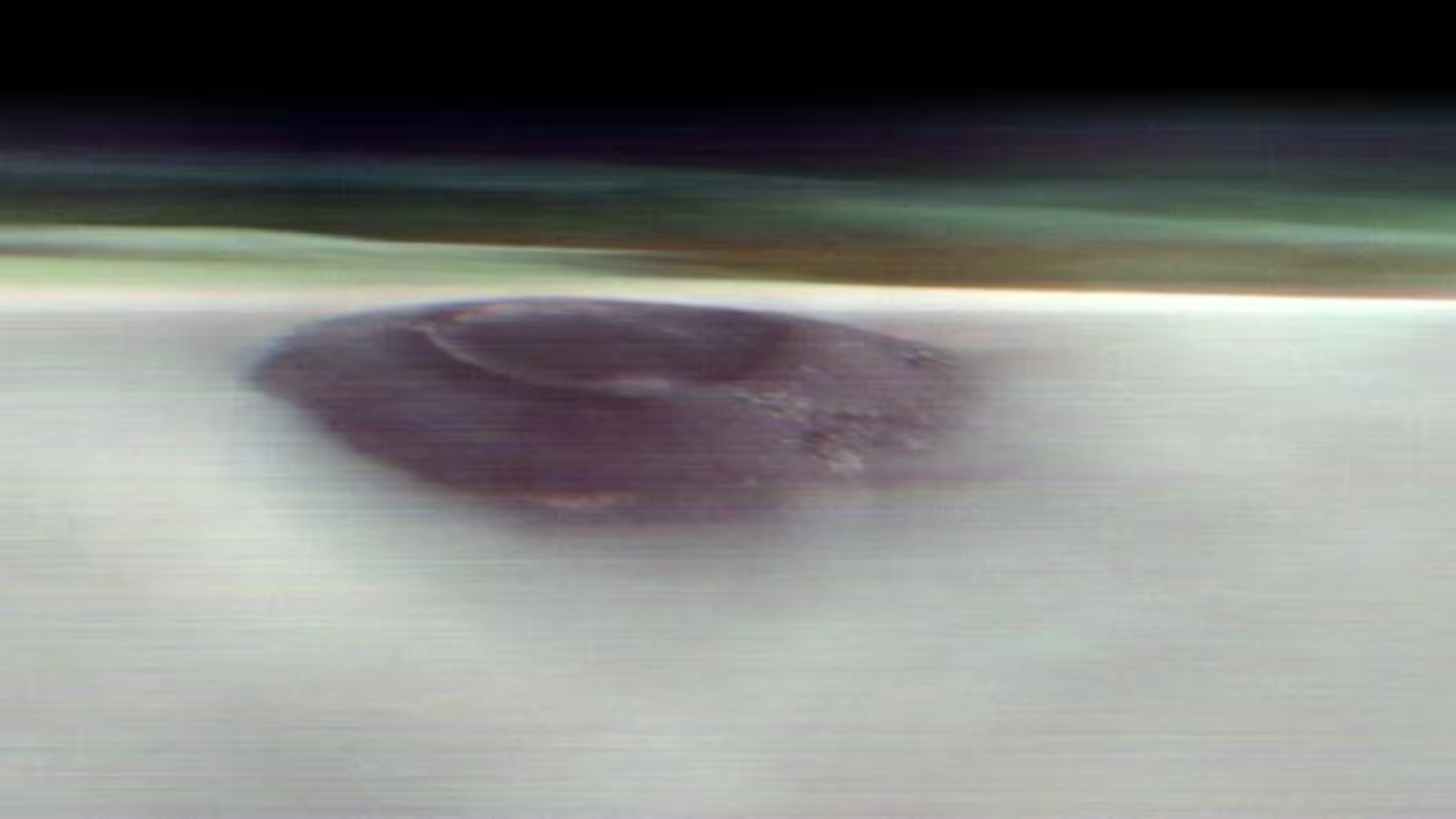3 Minutes
NASA’s Mars Odyssey spacecraft has delivered a remarkable new image, capturing the colossal Arsia Mons volcano piercing through the planet’s morning ice clouds. This unprecedented perspective provides unique insights into both the Martian landscape and the atmospheric conditions that dominate the Red Planet during its aphelion, when Mars is farthest from the Sun.
Scientific Background: Understanding Arsia Mons and Martian Volcanism
Arsia Mons is part of the famed Tharsis Montes volcanic complex, which comprises three massive shield volcanoes clustered near Mars’s equator. Among these, Arsia Mons stands as the tallest, reaching nearly 20 kilometers (about 12 miles) in elevation. This makes it almost twice the height of Earth’s tallest peak, Mount Everest, and significantly more massive—with roughly 30 times the volume of Mauna Loa, our planet's largest volcano. However, Arsia Mons is not even the largest volcano on Mars, a testament to the Red Planet’s extraordinary volcanic history. Scientific estimates suggest Arsia Mons was volcanically active for billions of years, with its most intense eruptions occurring around 150 million years ago.
Mission Details: How Odyssey Captured the View
Typically focused downward onto Mars’s surface, the Odyssey orbiter executed a special maneuver by rotating its camera 90 degrees to aim at the horizon. This allowed the spacecraft to photograph Arsia Mons as its summit broke through a band of early morning water-ice clouds — a feature prevalent at this stage of the Martian year. The timing coincides with Mars's position at aphelion, resulting in the formation of the equatorial "aphelion cloud belt", where moist air cools rapidly along the flanks of volcanic mountains, condensing into delicate ice clouds.

Revealing Mars’s Atmospheric Dynamics
Observing the Martian atmosphere from above offers scientists an invaluable opportunity to study cloud formation and layering in the planet’s thin air. These observations complement previous data collected from the surface by NASA’s Curiosity rover, enhancing our understanding of how weather patterns and seasonal changes shape Mars’s appearance and climate.
Expert Insight and Future Prospects
"We selected Arsia Mons hoping to catch its summit above the early morning clouds, and the result exceeded our expectations," explained Jonathon Hill, aerospace engineer at Arizona State University. The image not only provides a dramatic visual of Mars’s geological wonders but also informs atmospheric studies crucial to future surface missions and the broader search for understanding Mars’s evolution.
Conclusion
The Odyssey spacecraft’s new horizon-level panorama of Arsia Mons is more than a breathtaking snapshot: it represents a leap forward in our ability to observe the complex interplay between Martian geology and climate. These perspectives enrich our knowledge of planetary processes beyond Earth and pave the way for upcoming explorations on the Red Planet.
Source: sciencealert



Comments